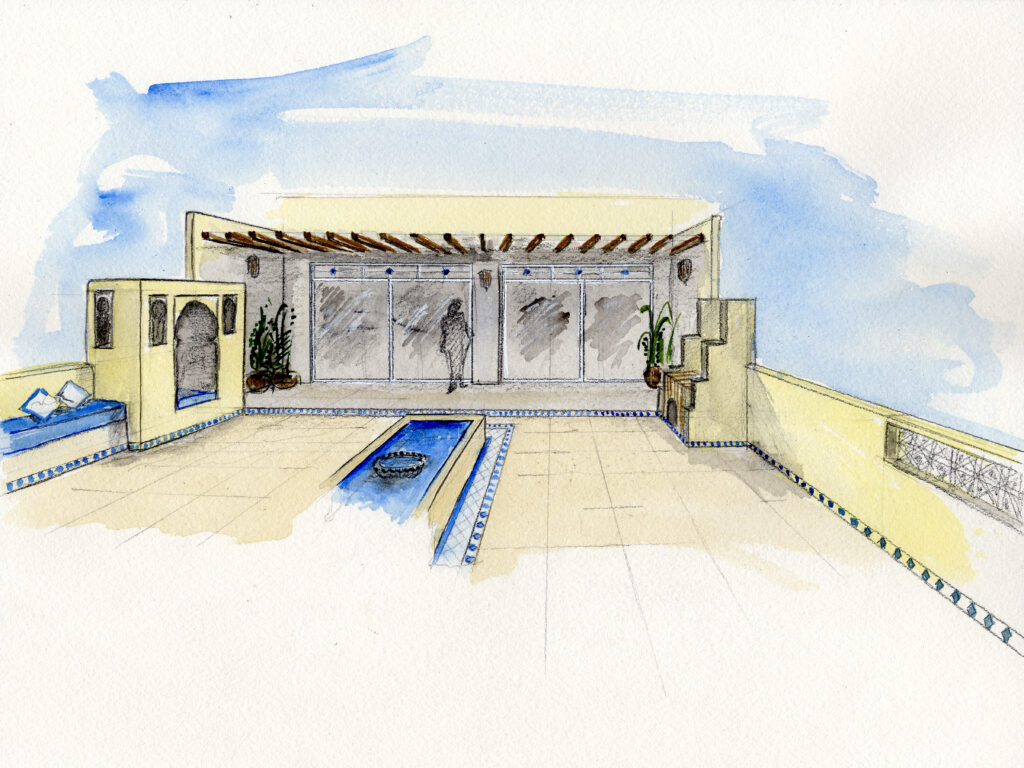Solopreneurs & Small Partnerships
Succession planning for X-small boutique architecture practices; those operated by solopreneurs or small partnerships (usually 2 founders), tends to be inherently personal and subjective. It’s not always about ensuring continuity as in the case of larger corporate firms; rather, it’s about creating a strategy that aligns with the individual goals of the owners, which can vary greatly. Whether it is to take a planned break, manage an unexpected illness, retire, sell the practice, or generate ongoing revenue post-retirement, succession in these small firms often reflects the founder’s unique style and vision, the boutique essence that sets it apart.
For many solopreneurs, succession planning isn’t just about handing over the reins; it’s about shaping a future that suits their evolving personal aspirations.

The Value of Succession Planning for Micro Firms
Here are some potential scenarios in which a temporary or permanent transfer of leadership may be necessary:
- Planned Absences and Sabbaticals: Founders may seek the flexibility to step away from their practice temporarily, whether to travel, pursue other passions, or simply recharge. Succession planning in this context allows for structured downtime without jeopardizing business operations or client relationships. Having a strategy in place for temporary leadership ensures the firm continues to function seamlessly.
- Health-Related Disruptions: Short-term or long-term illness related absences happen, succession planning becomes essential for protecting the business. A contingency plan should be in place to handle unexpected disruptions, ensuring that the business can continue delivering projects without compromising quality or client trust.
- Retirement or Reduced Involvement: For many boutique architects, succession planning is about preparing for the future, whether that is a gradual reduction in involvement, a full retirement, or the desire to take a backseat while the firm evolves. Planning ahead allows for a structured transition.
- Sale or Exit Strategy: Some boutique architects may wish to eventually sell their practice or hand over another team. To maximize the firm’s market value, succession planning should focus on enhancing its attractiveness to potential buyers and partners. This includes building a strong, recognizable brand, developing a loyal client base and creating systems that make the firm’s operations easily transferable to new ownership.
- Long-Term Revenue Generation & Royalties: Sometimes the goal is to ensure continued generation of revenue long after the founders have stepped away. This could be achieved through royalties on design work, intellectual property rights, or a structure that allows ongoing income while reducing direct involvement. Succession planning, in this case, focuses on establishing the firm’s intellectual assets as a source of future value.

Strategies to Build a Robust Boutique Brand
To foster sustainable growth and bolster business value in preparation for a planned succession, the following strategies should be considered for a smooth transition:
- Plan Meticulously: Design every aspect of your brand and business operations with precision. Attention to detail at every level strengthens the foundation for long-term success.
- Cultivate Resilience: Establish core values that reflect the essence of your practice and remain unshakable, regardless of external pressures. These values should be evident in every aspect of your operations.
- Embody Your Brand: Your personal style and design philosophy are your firm’s greatest assets. Ensure that your work, interactions, and projects consistently reflect the unique brand identity that sets you apart.
- Prioritize the Client Journey: Clients are the lifeblood of your practice. Pay close attention to every touchpoint—from the moment clients hear about your firm to project completion. Strive to make every client an ambassador for your brand, leveraging word-of-mouth marketing as a powerful tool.
- Maintain Comprehensive Records: Efficient record-keeping is essential. Develop systems to store and organize your firm’s projects and designs, making them easily accessible in both physical and digital formats.
- Network Strategically: Engage actively within your niche. Strengthen relationships within your boutique architecture community and look for opportunities to showcase your brand’s unique style.
- Collaborate Across Scales: Build partnerships with firms of various sizes. This opens doors to larger projects where your boutique expertise can add value and help expand your influence in the industry.
- Legal Safeguards: Ensure that all legal frameworks, from contracts to intellectual property protections, are firmly in place to safeguard your firm’s interests and long-term viability.

What Distinguishes a Genuinely ‘Boutique’ Practice?
A boutique architecture firm offers specialized, niche services that prioritize quality over quantity and cultivate a unique design philosophy. These studios focus on personalized client relationships, driven by a passion for their craft and a deep connection to their niche. For boutique firms, succession planning is essential in preserving their legacy, culture, and clientele.
However, it is a common misconception that all small firms inherently possess the qualities that define a boutique practice. Those competing mainly on price may lack the specialized expertise and personalized service that define a true boutique service. Genuine boutique studios provide a unique value proposition, emphasizing sustainability and legacy-building. Thus, succession planning becomes a critical strategy for maintaining their brand and impact.

Succession Strategies for Boutique Firms
Being proactive is key! In strategizing succession for boutique architecture firms, the process should align with the founders’ life goals and personal aspirations. The following strategies can help facilitate a smooth transition:
- Mentorship and Internal Succession: Fostering talent through mentoring students and young architects promotes and preserves the firm’s culture and design ethos; opening the door for transfer of leadership.
- Business Sale with Boutique Value: The plan maybe to retire and exit completely. Thus it is important to create a valuable brand with a well-established boutique identity and loyal clientele to attract potential buyers.
- Partnerships and Collaborations: Merging the business with strategic partners or transferring it to carefully chosen entities is a way to maintain the brand and be somewhat involved. This approach effectively balances the maintenance of the firm’s financial interests with the ability to avoid daily operational involvement
- Royalties on Design Work: Leverage copyrighted on designs to generate ongoing income.
- Networking and Community Involvement: Cultivate strong ties within the architecture industry through active participation in networks, conferences, and professional communities. These relationships enhance the firm’s visibility and support smooth leadership transitions, preserving the boutique legacy.
- Organized Archive of Works: Keep a well-organized archive of all projects, designs, and research. This ensures continuity in the firm’s design approach and serves as a valuable resource for future leaders, safeguarding the firm’s creative legacy.
- Publishing and Legacy Building: Put together a well-curated publication showcasing the firm’s body of work. This bolsters reputation and long-term value while providing additional revenue streams.
This content aims to shed light on the often-overlooked topic of succession planning for Micro architecture firms. It encourages new ways of thinking, emphasizing that succession is not just a standard procedure but a personal and strategic reflection of the founder’s vision. While larger firms dominate industry conversations, it’s crucial to recognize the unique contributions of these small practices and ensure their legacies continue to shape the architectural landscape.
More Reading
Small but Mighty: Debunking Myths About Extra Small Architecture Firms – Architizer
How Many Architects are there in the World? – Architizer
Make Your Life Vision Your Business – Architects Hub Insider
